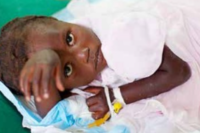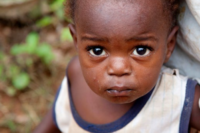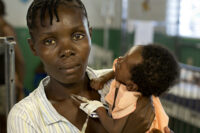By Joseph Giere, M.D.
March 6, 2013 was set aside as International Day for Women with the declared theme “a promise is a promise; time to end violence against women.” High profile assaults, against a young Indian woman who died from rape injuries and the Taliban attempted assassination of a 15 year old school girl, highlighted this theme as an appropriate one for action in 2013. There is a web site, showing events which occurred in over 100 countries to commemorate women’s achievements for equal rights and against gender violence in countries as diverse as Saudi Arabia and Canada. There were no postings from Haiti. This should not be seen as a silence of Haitian women to seek their gender rights. For, even during the earliest period, when there was the prosperous French colony of Saint-Domingue, women fought back against gender violence.
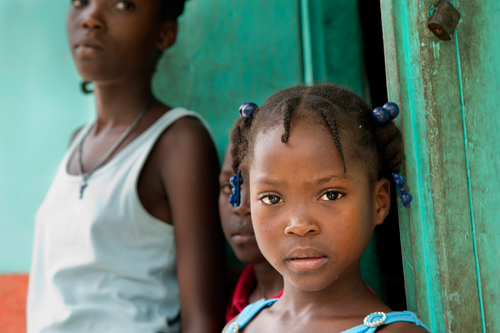 Long History of Haitian Women Fighting Gender Violence
Long History of Haitian Women Fighting Gender Violence
There is evidence to suggest that Haitian slave women on the plantations resisted by poisoning their master owners. Fast forward two centuries to the tumultuous history of the Haitian nation’s past years of revolutionary anarchy, past the attempted rule by over 20 presidents, past European gunboat interventions, past the crippling debt indemnification imposed on the Haitian state by France, past the piled wreckage of failed governments to the US marine occupation in the early 1900’s. The US Marines had to declare their occupation a success and depart in 1934 claiming falsely that they were leaving a “stable” society behind. In fact, it appears in leaving that at least one positive result might have been the trigger for women of Haiti to birth a modern Haitian woman’s movement. “Formal advocacy for women’s rights began with the formation of the Feminine League for Social Action in the 1930’s partially, as a response to sexual violence against women during the US occupation”. (Alexis Ekert, www.otherworldsarepossible.org).
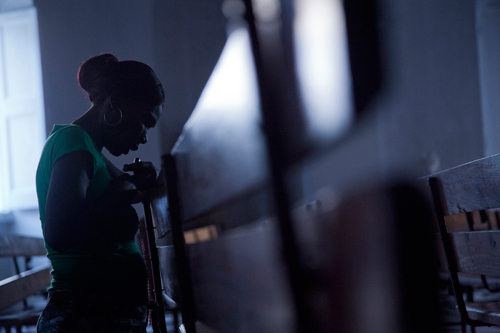 Some Progress Despite Political Instability
Some Progress Despite Political Instability
With time, women made some strides. There is a Haitian proverb: “Bit by bit a bird builds her nest.” By 1950, women in Haiti had even won the right to vote, but only with spousal permission. Continued endemic instability and turmoil allowed the 1956 election of Francois Duvalier “Papa Doc.“ He was ruthless in consolidating and maintaining power. The murder and rape, weapons often used by past Haitian dictatorships were institutionalized as the tools for his political control. Gender violence eroded and nullified women’s past gains. Women voices like the prominent Yvonne Rimpel were cruelly silenced. This regime embedded murder and systemic rape as a norm until 1986.
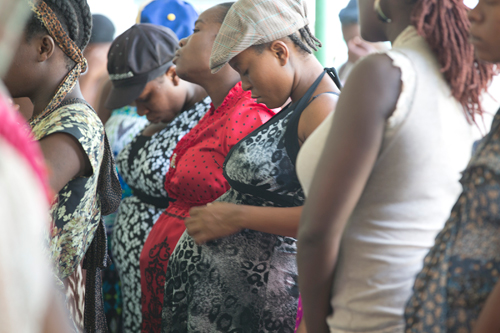 In 1994, after eight years of upheavals following the exile of Duvalier and then that of President Aristide, The Ministry on the Status and Rights of Women had been created to work for Haitian women’s rights under the exiled Aristide. The government then ratified international treaties (CEDAW) The Convention on the Elimination of all forms of Discrimination Against Women and was a signatory of the Inter-American Convention on the Prevention, Punishment and Eradification of Violence Against Women (Belem Do Paro). These treaty obligations were to hold the Haitian nation accountable and on paper seemed to promise a new era for women’s rights against gender violence and “Elimination of All Forms of Discrimination Against” Haitian women.
In 1994, after eight years of upheavals following the exile of Duvalier and then that of President Aristide, The Ministry on the Status and Rights of Women had been created to work for Haitian women’s rights under the exiled Aristide. The government then ratified international treaties (CEDAW) The Convention on the Elimination of all forms of Discrimination Against Women and was a signatory of the Inter-American Convention on the Prevention, Punishment and Eradification of Violence Against Women (Belem Do Paro). These treaty obligations were to hold the Haitian nation accountable and on paper seemed to promise a new era for women’s rights against gender violence and “Elimination of All Forms of Discrimination Against” Haitian women.
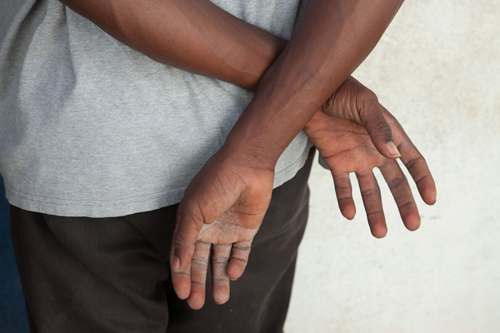 But instability and gender violence in Haiti continued relatively unimpeded in spite of the convention promises.
But instability and gender violence in Haiti continued relatively unimpeded in spite of the convention promises.
Rape is a Real Crime
In 2004, The UN Security Council was prompted to send a peacekeeping force (MINUSTAH) to help maintain law and order. Some progress for women did occur. In 2005, rape was defined in law as a crime. Before 2005, rape was considered as an offense against public morals. It represented a “moral failure”, with injury only to the victim’s honor, not to her person. No punishment of consequence for rape was applied in Haiti.
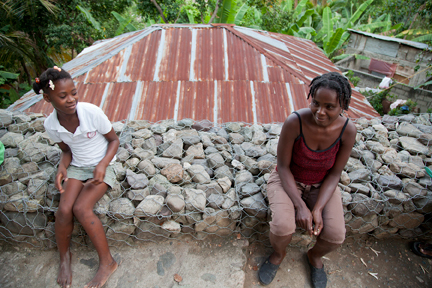 One societal solution to resolve the dishonor was for the couple to marry. Non virgins who were raped were already “dishonored”. Most rapes went unreported and still are.
One societal solution to resolve the dishonor was for the couple to marry. Non virgins who were raped were already “dishonored”. Most rapes went unreported and still are.
To report a rape, the practice was for women to provide judges medical evidence with the rape complaint within 72 hours.
Laws sympathetic to women might be considered in short supply. Article 269 of the penal code at the time stated, a man was permitted to kill his wife if he caught her in an act of adultery: “Murder committed by a husband against his wife and/or her accomplice or both, should he surprise them and catches them in the act in the conjugal home, is excusable.”
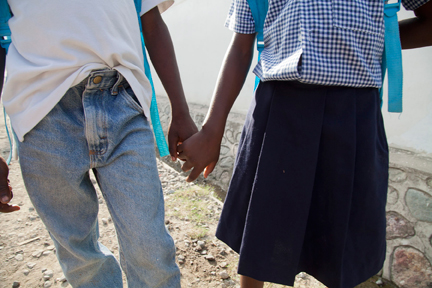 (This term “excused” did not eliminate punishment, but drops the level of punishment down a step. There is no recent evidence this punishment by a husband has occurred, and fortunately, only reflects attitudes not actual practice.)
(This term “excused” did not eliminate punishment, but drops the level of punishment down a step. There is no recent evidence this punishment by a husband has occurred, and fortunately, only reflects attitudes not actual practice.)
On the contrary, Haitian women were not granted the same “legal license to kill their unfaithful husbands” that only faced a maximum fine of $50 if he were convicted of adultery. The treaty laws protecting women and law calling for women in 30% of government posts has never matched reality.
Cultural Roots of Gender Violence
Sexual violence is probably more rooted in Haitian culture than government laws can reach. It is long considered a family problem to be resolved within the family. A 1995 UNICEF report begins with the premise that sexual violence is a “social phenomen, an ancestral heritage linked to our customs and habits as a people.” The report profiles victims of sexual violence in Haiti. Over half the offenders were spouses, family and or friends not strangers. Young girls were disproportionately victims. Religion, social status and education levels made little no difference. Men surveyed (90%) said they never used violence against their wives but 80% believed that wife beating could be justified as in cases where women were “rowdy”, extravagant, refused to obey or commit adultery”. A just released survey (Violence against Women in Latin America and the Caribbean www.paho.org/violence April 2013) compares physical or sexual partner violence reported by Haitian women to the Dominican Republic and neighboring Jamaica. Haitian women admit in higher numbers to have faced physical or sexual partner violence. In the same report, 28.5% of women themselves when asked agree “that wife beating is justified for at least one reason”. The report however does offer the possibility there might be an emerging trend to the better in Haiti.
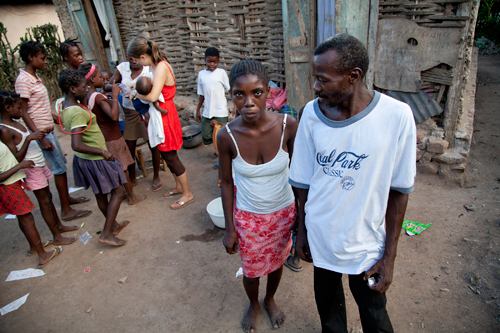 Mother Nature was not Helpful
Mother Nature was not Helpful
The force 7 earthquake of January 12, 2010 lasted 35 seconds. It occurred after the nation of Haiti had endured several years of multiple hurricanes, crop failures and mud slides that buried the city of Gonaive.
The quake compounded and then exposed the problems of gender violence in Haiti into headline news. 1.3 million Haitians became homeless. There were 800 camps in Port Au Prince alone. Camp conditions provided an explosive epidemic of rapes. As many as 19 out of 100 young women were victimized.
Camp life, thin fabric walls with minimal privacy, numbers of young orphans, roving predator gangs, unemployment, competition for food and sanitation were setups for the physical abuse that became camp life scourges. Women did fight back. They organized protective patrols. They equipped each other with whistles to sound alarm. Many were injured in the process. Many grass root self help organizations came into being which originally were only thought to be short term measures.
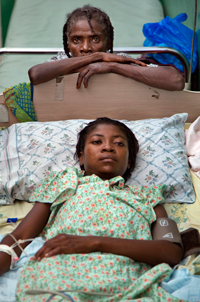 Madre, a US based human rights organization, partnered with a Haitian grass roots woman’s organization KFAVIV Komisyon Fanm Viktim Pou Viktim (Commission of Women Victims for Victims) to dampen the spike in violence against women. They have prodded the women’s ministry under the current President Michel Martelly, to mark up a reform bill (Avant-Projet de code) to provide a precise legal definition of rape, incest and sexual violence, and to identify hospitals as a primary resource requiring training and gathering legal evidence as well as treatment.
Madre, a US based human rights organization, partnered with a Haitian grass roots woman’s organization KFAVIV Komisyon Fanm Viktim Pou Viktim (Commission of Women Victims for Victims) to dampen the spike in violence against women. They have prodded the women’s ministry under the current President Michel Martelly, to mark up a reform bill (Avant-Projet de code) to provide a precise legal definition of rape, incest and sexual violence, and to identify hospitals as a primary resource requiring training and gathering legal evidence as well as treatment.
Health Consequences of Gender Violence
Gender violence has immediate and long term health problems. There are constant reports in medical literature of emergency room care which compare injury between matched groups of women with and without a history of violence, wherein serious burns, fractures and surgical care is higher. One matched study from a US HMO showed abused women had 50-70% increase in gynecologic, stress related and central nervous system diseases.
Long term maternal mortality and infant mortality are proven to be directly related to gender violence. Maternal deaths due to hemorrhage and physical injury, and infant prematurity with failure to thrive put Haiti at the bottom of the statistics in the Western hemisphere. The national statistics of Haiti are far below the Dominican Republic next door. Life expectancy, maternal and child mortality, mortality from cancer are all higher. Women do not get Pap smears routinely. Cervical cancer can be treated. Some might say this is a form of gender violence.
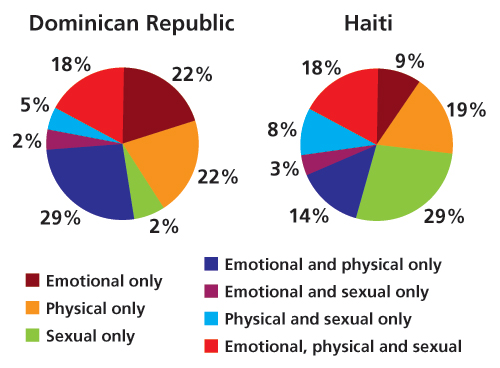 Question for now: Are there signs of silver linings for women in Haiti? SURE! Why?
Question for now: Are there signs of silver linings for women in Haiti? SURE! Why?
Because Haitian women victims are themselves creating organizations at the local level to help other women victims. And, as noted with the creation of the organization ADHESE (Association des Hommes du Sud-Est), there are small groups of men also working for an end to gender violence. They formed ADHESE because “we realize that this problem of violence against women was caused by men by male behavior and we need to educate other men”.
Hôpital Sacré Coeur Offers Hope for Women
CRUDEM’s mission statement firmly acknowledges the importance of women and their treatment with respect and dignity.
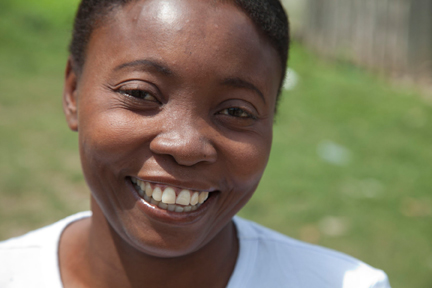
The hospital practices a no tolerance for abuse policy. At Hôpital Sacré Coeur the particular medical needs of women receive significant attention. Last year, HSC opened a new maternity wing with a special new born care nursery (NICU) to decrease maternal and new born mortality.
A Natural Family Planning program emphasizes the important of women’s dignity, encourages their empowerment by instructing them in how to take care of and take charge of their bodies. A new nutrition and family center and a pediatrics unit support women’s care and the protection and well-being of their children.
While women in Haiti have a long road still to travel, progress is being made and Hôpital Sacré Coeur provides them with an invaluable resource to live their lives, healthy and with respect and dignity.
Support Haitian Women with a donation to hospital’s medical programs.
References:
i In 2007, 108 Siri Lankan peacekeepers were returned home by the UN because of alleged sexual exploitation and abuse of minors. Recent similar UN problems help explain Haitian historic distrust of the United Nation Forces and their peace keeping difficulties. A UN force of Afghani women received gender violence training. Once dispatched to Haiti, their duties were confined to maintaining camp order.
ii Before these changes, there was actually serious punishment available for rape. The 2005 law increased the punishment, and moved rape from the “offense against public morals” section, both of which were improvements. But the main problem, both before and after the law, was that the justice system was not using the tools it had to prosecute.
iii In terms of the law, virginity did not matter (although of course it sometimes did in practice).
iv This is contested. There has never been a formal requirement of a medical certificate in Haitian law. It is merely a practice, very widely adopted).
v As of March 2013, current estimates are that 500,000 displaced people still live in tents or scrap metal shelters.
vi The bill is being presented to Haitian National Assembly in spring 2013
 Joseph Giere,M.D. is a Washington, D.C. based obstetrician/gynecologist who serves as a member of the CRUDEM Board of Directors. He lives in Potomac, MD with his wife Mary.
Joseph Giere,M.D. is a Washington, D.C. based obstetrician/gynecologist who serves as a member of the CRUDEM Board of Directors. He lives in Potomac, MD with his wife Mary.





